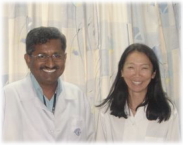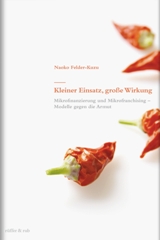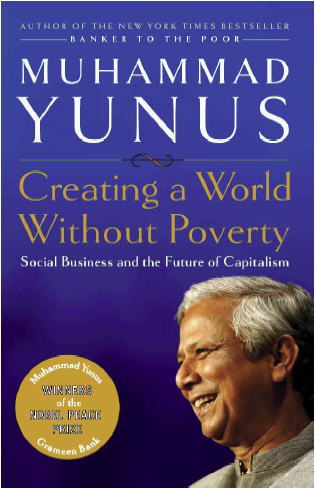 On April 16th, I visited Aravind Eye Hospital in Pondicherry one of the 5 eye hospitals of Aravind Eye Care Systems (AECS). AECS was founded in 1976 by the late Dr. Venkataswamy (Dr. V) with the mission to eliminate needless blindness by providing compassionate and high quality eye care.AECS today is not only the world largest eye care facility but the world leader in eye care delivery. It encompasses 5 hospitals, a manufacturing center for ophthalmic products (Aurolab), an international research foundation (Aravind Medical Research Foundation) and a resource and training center (LAICO). During the 12 month period to March 2007 AECS treated 2.3 million outpatients and performed 270,444 surgeries. AECS is a profitable institutions although only 40% of the patients pay between US$ 50-300 for catarat surgeries while 60% are non-paying patients.
On April 16th, I visited Aravind Eye Hospital in Pondicherry one of the 5 eye hospitals of Aravind Eye Care Systems (AECS). AECS was founded in 1976 by the late Dr. Venkataswamy (Dr. V) with the mission to eliminate needless blindness by providing compassionate and high quality eye care.AECS today is not only the world largest eye care facility but the world leader in eye care delivery. It encompasses 5 hospitals, a manufacturing center for ophthalmic products (Aurolab), an international research foundation (Aravind Medical Research Foundation) and a resource and training center (LAICO). During the 12 month period to March 2007 AECS treated 2.3 million outpatients and performed 270,444 surgeries. AECS is a profitable institutions although only 40% of the patients pay between US$ 50-300 for catarat surgeries while 60% are non-paying patients.
I was taking part on Unltd Learning Journey 2008 visiting social entrepreneurs in Southern India and although this was not part of the official program it was great that I could visit one of the institutions that I respect so much and have featured in my new book (see entry below). Renjith who is a manager for out-patients organized an efficient visit so that we could have an overview of how patients (both paying and non-paying patients) were examined and treated. We also had a chance to talk to Dr. Ravindran (picture above), the Chief Medical Officer about Aravind expansion plans. Aravind is busy expanding and replicating its model due to the many inquiries and requests from many places both in India and abroad. Yunus Muhammad is opening this month the first Grameen Eye Hospital in Bangladesh modeled after the Aravind Eye Hospital.
Category Archives: innovative partnerships
New book: Kleiner Einsatz Grosse Wirkung (Beyond Microfinance: The Movement of Making the World a Better Place) by Naoko Felder

Starting with an update on microfinance, it covers other innovative market-oriented models such as base of the pyramid (BOP) businesses, social enterprises and microfranchises. These models together with microfinance are improving the lives of the 4 billion people living at the BOP. The last section covers in detail a remarkable example in this area, Scojo Foundation. Scojo is developing the market for affordable reading glasses at the BOP through microfranchising.The book provides the author’s insights on 1) how the business (for-profit) and social (non-profit) worlds have been converging, setting the stage for these new models to emerge, 2) how these models, the people behind them, and the advent of Web 2.0, are creating a strong and positive movement towards a more responsible, sustainable and kinder world and 3) how all of us could make a difference.The book has been published in German language by rueffer and rub with the title >Kleiner Einsatz Grosse Wirkung. (Small input, big impact – thus,the red chilis of the cover) This book illustrates a giga trend, the powerful movement of making the world a better place.
2008 Skoll Forum Highlights
The 5th Skoll World Forum for Social Entrepreneurship took place last week in Oxford. This powerful, inspiring forum led by Jeff Skoll and Sally Osberg celebrates and connects social entrepreneurs to the world and is making “social entrepreneurship” known to governments as well as businesses. This year’s highlights were the speeches of Lord Anthony Giddens (climate change: opening plenary) former President Jimmy Carter (keynote: Skoll Awards Ceremony) and Paul Farmer and Al Gore (both in the closing plenary). There were 11 Skoll Awards given out this year and Kiva (Matt Flannery and Permal Shah) was one of them. This was the second year in the row that I attended Skoll Forum and it is an awesome experience to be 3 days in a place where you see over 700 people trying to make a world a better place. One of the ventures that I was very impressed about is E+Co which empowers local enterprises in developing countries by providing business services and financing so that these enterprises can deliver clean and affordable energy to households, businesses and communities. There are several sessions that are covered by video and are all highly recommended.
Goldman Sachs to invest in business/management education of 10,000 women
Goldman Sachs launched last week 10,000 WOMEN, an amazing initiative that will deliver business and management education to 10,000 underserved women predominantly in developing and emerging markets. Goldman Sachs will commit $100 million over the next 5 years (in addition to the time and expertise that the GS people will be dedicating on mentoring) to this initiative supporting partnerships between universities in the U.S. and Europe and business schools in emerging and developing economies. The initial partnerships are working on pragmatic, flexible and short term programs resulting in business and management certificates. Brown,Columbia, Harvard, Stanford, Cambridge, University of Michigan, and Wharton have already initiated academic partnerships with business schools in Africa and the Middle East for this program.
The initiative has two goals: increasing the number of underserved women receiving a business/management education and improving the quality and capacity of business/management education around the world. Expanding the entrepreneurial talent and managerial pool in developing and emerging economies -especially among women- is one of the most important means to reducing enequality and ensuring more shared economic growth. (Executive Summary)
It is a remarkable initiative addressing effectively one of the most difficult obstacles for sustainable economic growth. The initiative will provide many microentrepreneurs with the much needed business/management skills that would enable them to build and expand their businesses and thus, contribute significantly to the economic growth of their countries.
10,000 Women Fact Sheet
Press release
Book:Creating a World Without Poverty: Social Business and the Future of Capitalism by Yunus Muhammad
 Muhammad Yunus, Nobel Peace Price winner, in his continuing fight to make poverty history promotes a new type of enterprise which has as its objective to make a difference. These social business enterprises will be self sustainable, in his words “no loss, no dividend enterprises”. He refers to two types of such enterprises one having investors like the latest joint venture between Grameen and Danone, an enterprise providing fortified yoghurt to malnourished children. Investors will get their capital back, but, profits will be injected back to the company to continue to achieve its objective. The second type of social business enterprise is a for-profit model but owned by the poor such as Grameen Bank.This book goes in depth explaining his “Next Big Idea” social businesses and also present some ideas on how corporations and individuals can take part in achieving a “world without poverty”. It is inspirational and of course uplifting. Highly recommended. Past related entry on this topic, “Muhammad Yunus promotes social businesses”http://www.microfinance.ws/microfinance/2006/12/
Muhammad Yunus, Nobel Peace Price winner, in his continuing fight to make poverty history promotes a new type of enterprise which has as its objective to make a difference. These social business enterprises will be self sustainable, in his words “no loss, no dividend enterprises”. He refers to two types of such enterprises one having investors like the latest joint venture between Grameen and Danone, an enterprise providing fortified yoghurt to malnourished children. Investors will get their capital back, but, profits will be injected back to the company to continue to achieve its objective. The second type of social business enterprise is a for-profit model but owned by the poor such as Grameen Bank.This book goes in depth explaining his “Next Big Idea” social businesses and also present some ideas on how corporations and individuals can take part in achieving a “world without poverty”. It is inspirational and of course uplifting. Highly recommended. Past related entry on this topic, “Muhammad Yunus promotes social businesses”http://www.microfinance.ws/microfinance/2006/12/
Bill Gates Calls for “Creative Capitalism”
On January 24th at the WEF in Davos, Bill Gates made a call on “creative capitalism” a new system that “would have a twin mission: making profits and also improving lives for those who don’t fully benefit from market forces.” He pointed out that “To make the system sustainable, we need to use profit incentives whenever we can. At the same time, profits are not always possible when business tries to serve the very poor. In such cases there needs to be another market incentive- and that incentive is recognition… In markets where profits are not possible, recognition is a proxy; where profits are possible, recognition is an added incentive.The challenge is to design a system where market incentives including profits and recognition, drive the change” He cited examples like Bono’s RED Campaign which has generated in 18 months $50mn for the Global Fund to Fitght AIDS TB and Malaria, a Dutch company which holds the rights to a cholera vaccine that retains the rights in the developed world but shares those rights with manufacturers in the developing world, and a new law in the USA whereby drug companies that develop a new treatment for a neglected disease like malaria or TB can get a priority review from the FDA for another product they have made. He called on businesses, governments and the non-profit world on to take up on projects that works both to generate profit and solve the world’s inequities.
This is a great call on what is also referred as BOP businesses and “double or triple bottom line businesses” and the work done by many social entrepreneurs. The new name is good and easy to understand. The best part is the potential impact of this call as it comes from one of the most powerful business leaders and one of the most influential philanthropist of today. The webcast of this speech is available from the WEF site.
Topics for 2008: Mobile Banking at the BOP
An exciting area of growth is mobile banking as it is accelerating the outreach of financial services at the BOP. The increasing use and diffusion rate of mobile telephony in developing countries is creating low cost alternatives for people to make deposits, remittances and payments. Smart Money and Globe’s G-Cash in the Philippines, Wizzit in South Africa and M-Pesa in Kenya are some of the innovative mobile transaction systems. Africa has witnessed a spectacular growth in mobile phone subscriptions from 15.3mn in 2000 to 198mn in 2006. The penetration rate in this period soared from 1.97% in 2000 to 21.48% in 2006! (Penetration rate of fixed lines in the same period went from 2.48% to 3.09%). CGAP is covering this area with a slightly broader scope. They have published very interesting notes on “branchless banking” which they define as “the delivery of financial services outside conventional bank branches using information and communications technologies and non-bank retail agents (merchants, supermarkets, post offices)”. The notes published so far cover India, Kenya and Pakistan. Mobile banking/branchless banking is a hot topic for 2008.
UN, Google and Cisco launch a website to track Poverty Reduction
On November 1st, UN, Google and Cisco unveiled the MDG Monitor www.mdgmonitor.org , an innovative site to track the progress towards decreasing global poverty by 2015, a global campaign known as the Millenium Development Goals, or MDGs. From their press release;
…a Web surfer can use Google Earth to fly anywhere on the planet and explore from above, in three dimensions, the places where work is being done to realize the MDGs. With a few simple clicks, user can access country assessments and data collected by the UN worldwide…By laying out areas of progress and continuing challenge for the world to see, MDG Monitor aspires to keep the global community’s eyes firmly fixed on the Millenium Goals and to provide vital information for policy makers and development practitioners worldwide.
It is a very cool site. A great example of innovative partnerships leveraging their expertise and creating huge impact.
